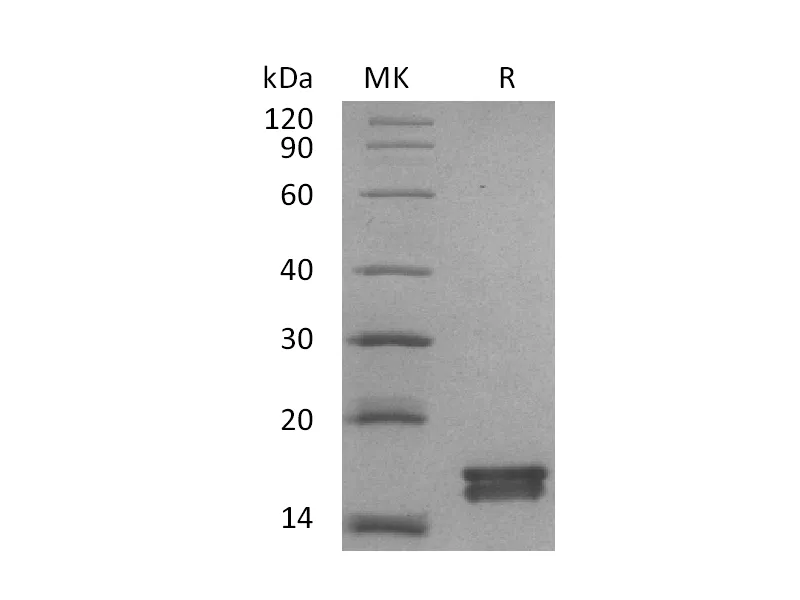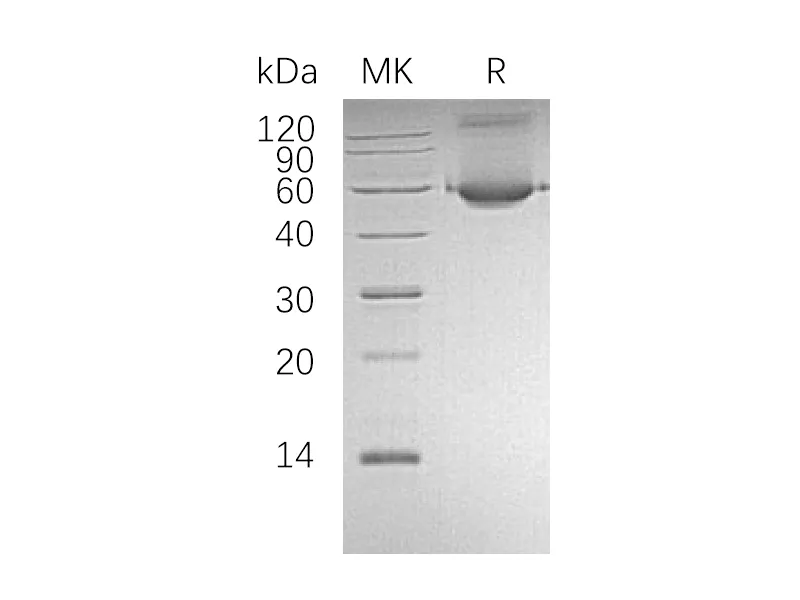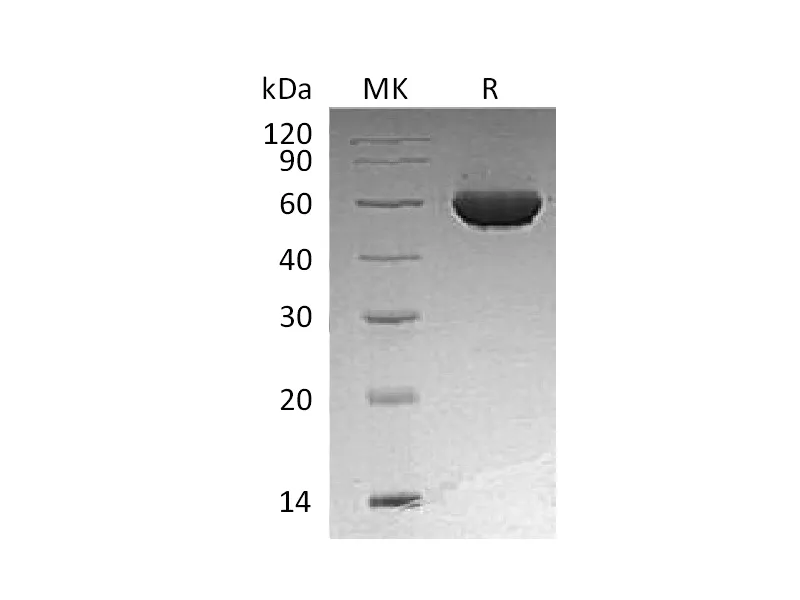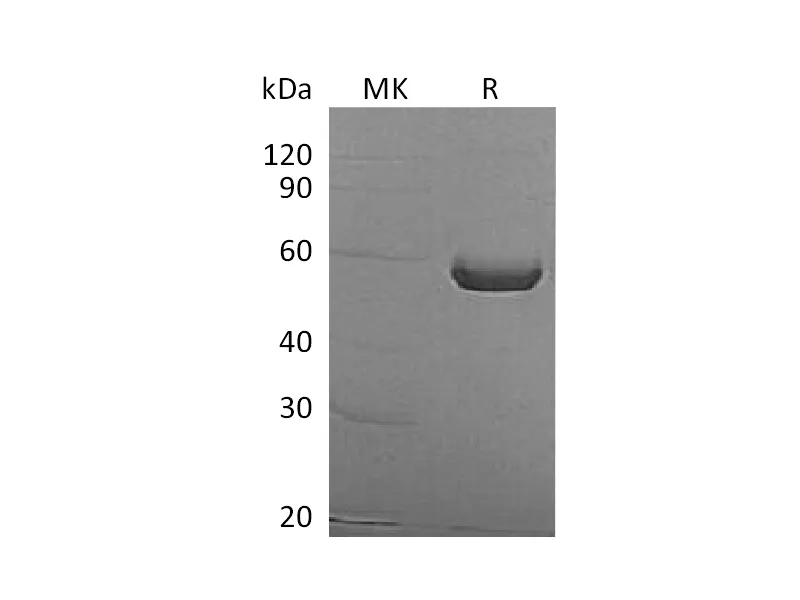Alternative Names
Hepatocyte Cell Adhesion Molecule; Protein HepaCAM; HEPACAM
Background
Hepatocyte Cell Adhesion Molecule (HEPACAM) is a single-pass type I membrane protein that localizes to the cytoplasmic side of the cell membrane. HEPACAM includes a signal sequence (amino acid 1-33), an extracellular region (amino acid 34-240) with one Ig-like C2-type domain and one Ig-like V-type domain, a transmembrane segment (amino acid 241-261), and a cytoplasmic domain (amino acid 262 - 416). The cytoplasmic domain plays an important role in regulation of cell-matrix adhesion and cell motility. HEPACAM acts as a homodimer and dimer formation occurs predominantly through cis interactions on the cell surface. HEPACAM is involved in cell motility and cell-matrix interactions. The expression of this gene is down-regulated or undetectable in many cancer cell lines, so this may be a tumor suppressor gene.
Note
For Research Use Only , Not for Diagnostic Use.




